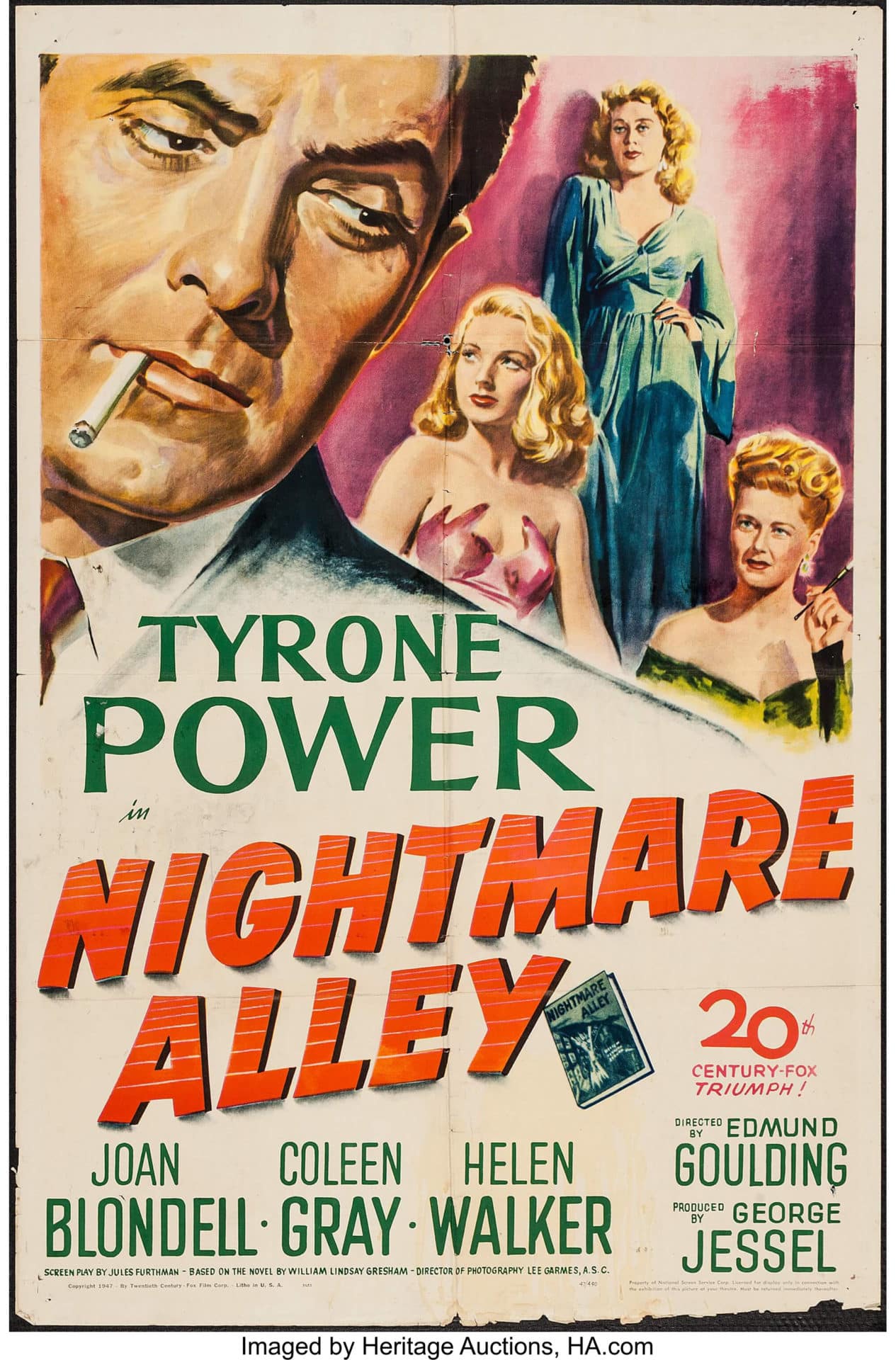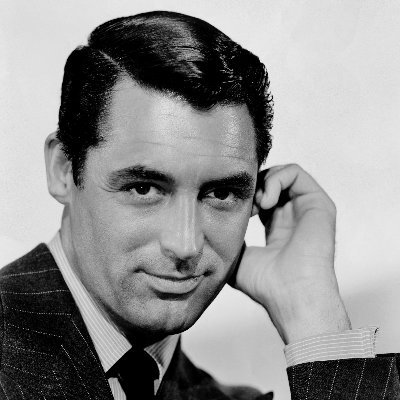
- Starring
- Tyrone Power, Joan Blondell, Coleen Gray
- Writer
- Jules Furthman
- Director
- Edmund Goulding
- Rating
- n/a
- Running Time
- 110 minutes
Overall Score
Rating Summary
Nightmare Alley marked a high point in the career of its leading man Tyrone Power, who had tired of the romantic and swashbuckler roles he had been typecast in. Power asked a favor of 20th Century Fox studio chief Darryl F. Zanuck: to buy the rights to William Lindsay Graham’s novel so he could play its less-than-desirable lead. The end result was this cult-classic of a film noir that has seemingly taken on more meaning with a new audience thanks to an expanded internet that can share their passion for film.
Nightmare Alley tells the story of Roustabout Stanton Carlisle (Tyrone Power), a man who joins a traveling carny and unsuccessfully schemes to figure out the mind-reading act of Mademoiselle Zeena (Blondell) and her alcoholic husband Pete (Ian Keith). But when Pete dies, Zeena takes on Stanton as a partner, and his skill quickly proves to exceed that of his predecessor. Carlisle eventually abandons Zeena and the carny to reinvent himself as “The Great Stanton,” wowing people at a Chicago hotel.
First off, Power is undeniably great as the slimy man at the center of this twisted tale, leaning into an untapped smarmy demeanor that feels more natural for him than the interchangeable romantic types that had brought him fame before. He displays a natural charisma and charm that makes you think of him as a con-man, but leaves you wanting to be wrapped up in his slippery offers and suck-ups. He is particularly stellar at portraying gradual degradation; the artificial sheen of his “successes” becoming phonier and more plastic with every failed twist and turn, until he spirals out of control. He also gets to play off great supporting actors. With Blondell capturing the magnitude of her own fall from grace as Zeena. But it’s Helen Walker who makes a strong impression as psychologist Lilith Ritter; Stanton leans on her for counseling but Ritter isn’t going to take any of his nonsensical whining. Walker shows vulnerability, desperation, and a firm foot on the ground that makes her captivating to watch.
The film itself is technically gorgeous yet appropriately seedy; essentially a higher budget of film noirs that were popular in the 1940s, Goulding directs this with a certain seething mood, pulling disorienting angles from top to bottom. It has that classic noir look, where the shadows paint all kinds of singular details and the blacks are sharp and defined. Cinematographer Lee Garmes leans into the griminess of the titular nightmare alley, filling the film with images of ugly Halloween events gone wrong. The production design is equally up to par, as is Barbara McLean’s tight editing, making this a visual delight to match the parallel narrative of the rise-and-fall of charismatic cons. The fact that Stanton ends up right were Zeena was at the beginning results in the story wrapping up on a somber yet fitting note. Meanwhile, Furthman’s script hits the right notes with barby dialogue to match the tragic horror story at the core of this film; somehow you feel bad for a pretty awful human being.
In the end, Nightmare Alley is a classic film noir that deserves to be rediscovered many times over. Before watching the upcoming remake, viewers should do themselves a favor and watch this stellar original.
still courtesy of MUBI
Follow me on Twitter, Instagram, and Letterboxd.
If you liked this, please read our other reviews here and don’t forget to follow us on Twitter or Instagram or like us on Facebook.
Discover more from
Subscribe to get the latest posts sent to your email.

